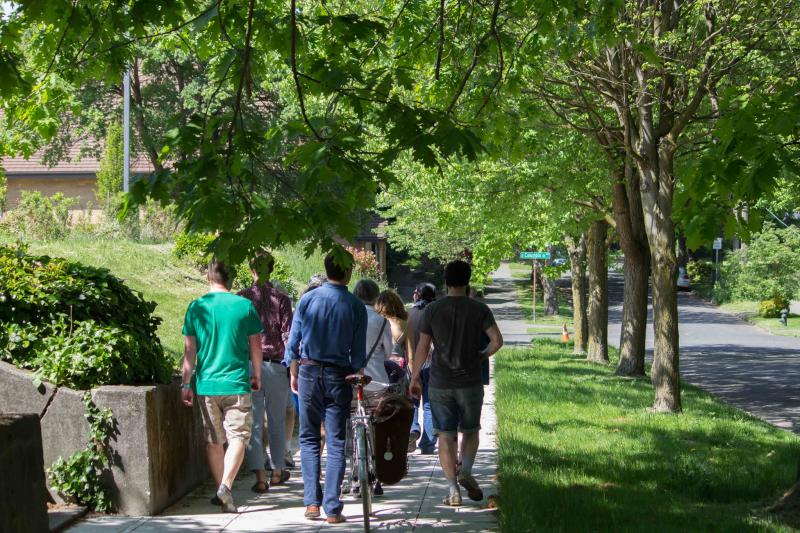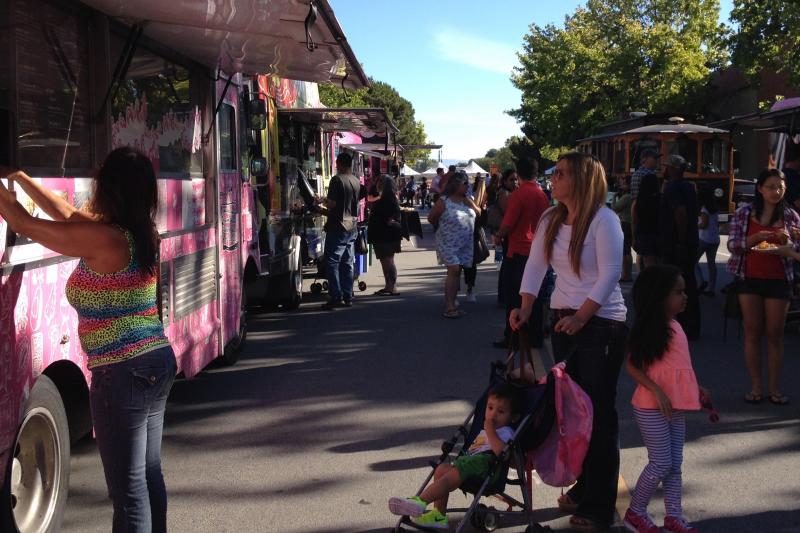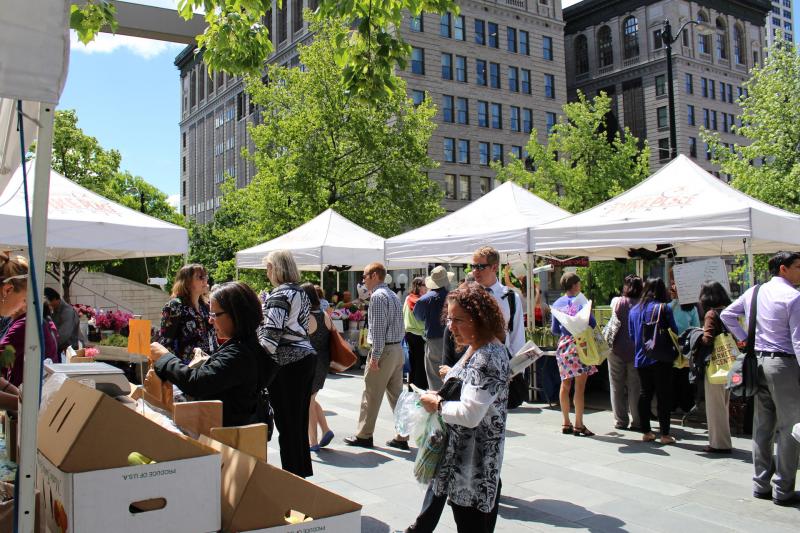San Francisco Bay Area

The San Francisco Bay Area is composed of nine counties and 101 municipalities. There are more than a dozen major cities, along with extensive suburbs, open space, and rural and agricultural land. The region’s population is just over 7.5 million, an increase of more than seven percent from 2010-2015, and is projected to continue growing in coming decades. In California, it is second only to the Los Angeles metro area in size and is the fifth-largest in the country. The Bay Area’s Sustainable Communities Initiative (SCI) program was the Regional Prosperity Plan, which was awarded $15 million and ran from 2012-2014. It funded pilot projects in affordable housing, transit, and economic development.
The Regional Prosperity Plan (RPP) was successful in engaging urban and suburban jurisdictions in projects, but had difficulty attracting and maintaining interest from the business sector. Participants reported that the RPP resulted in elevating the role of equity in planning decisions, with some funding programs operated by MPOs integrating an equity component. Additionally, community-based groups reported success in forming new alliances and crossing institutional boundaries as a result of the RPP-backed activities.
The RPP created a process by which participants were able to identify and break down some barriers to collaboration and also include equity considerations in the planning process. This enabled many stakeholders to take part in a conversation in which many diverse interests had a voice. A major drawback was the absence of engagement by the business community. Another failing noted by participants was the lack of follow-through once the grant ended, with the result that engagement was abruptly discontinued.
 I think equity, for whatever reason, is a hard topic to talk about. I think what one
of the really huge parts of the grant is that it created a formal space and legitimacy through which this conversation could occur... It allowed the conversation to occur and it allowed for equity to become an increasing core component of what agencies are either talking about or are going
to be implementing. MTC is beginning to have that as a key component..."
I think equity, for whatever reason, is a hard topic to talk about. I think what one
of the really huge parts of the grant is that it created a formal space and legitimacy through which this conversation could occur... It allowed the conversation to occur and it allowed for equity to become an increasing core component of what agencies are either talking about or are going
to be implementing. MTC is beginning to have that as a key component..."—Bay Area regional agency employee
 There are some really hopeful signs. MTC
is now considering a new 10 million dollar investment in affordable homes near transit... A housing preservation fund coming out of MTC— that could be a great step forward. There’s the second round of OBAG, and in a couple months there will be more talk about— staff proposal on how to incorporate housing affordability and displacement in criteria in OBAG— three hundred and fifty million [dollars] over five years to reward regions that are growing in sustainable and equitable ways.”
There are some really hopeful signs. MTC
is now considering a new 10 million dollar investment in affordable homes near transit... A housing preservation fund coming out of MTC— that could be a great step forward. There’s the second round of OBAG, and in a couple months there will be more talk about— staff proposal on how to incorporate housing affordability and displacement in criteria in OBAG— three hundred and fifty million [dollars] over five years to reward regions that are growing in sustainable and equitable ways.”—Bay Area regional planning agency employee
 The nature of this economy right now is that every town is competing with every other town to get the big tech firm, biotech firm, whatever they think is going to generate a bigger tax base for them. They don’t want housing. They don’t want affordable housing. They don’t want poor people here. There’s a huge racial tone around that. It’s not in their interest to do equitable development. It’s not in their financial interest. Cities depend on their tax base and fiscalization of land to run their budgets...”
The nature of this economy right now is that every town is competing with every other town to get the big tech firm, biotech firm, whatever they think is going to generate a bigger tax base for them. They don’t want housing. They don’t want affordable housing. They don’t want poor people here. There’s a huge racial tone around that. It’s not in their interest to do equitable development. It’s not in their financial interest. Cities depend on their tax base and fiscalization of land to run their budgets...”—Bay Area community-based organization representative
 Local decision-makers don’t want their local decisions conditioned based on regional priorities. There’s no political incentives for people to act at a regional level. They’re elected by local populations. They get campaign donations by people who are interested in local issues. They come to a meeting where some advocates and increasingly more community groups come, and some Tea Party folks come… and we expect them, without sufficient political pressure, or without legal pressure or whatever, to act [regionally].”
Local decision-makers don’t want their local decisions conditioned based on regional priorities. There’s no political incentives for people to act at a regional level. They’re elected by local populations. They get campaign donations by people who are interested in local issues. They come to a meeting where some advocates and increasingly more community groups come, and some Tea Party folks come… and we expect them, without sufficient political pressure, or without legal pressure or whatever, to act [regionally].”—Bay Area community-based organization representative
 So, now we’re in a moment where many more of the local equity groups are aware of the regional agencies... we are aware of what they do. We are aware of who they are. We are aware of where they’re located. We understand their programs, their policies, etc… We’re able to do a better job sharing that kind of information with the folks who are impacted by the policies and decisions of the regional agencies. So we are now in a new period where there’s beginning to be a much more of a direct engagement...”
So, now we’re in a moment where many more of the local equity groups are aware of the regional agencies... we are aware of what they do. We are aware of who they are. We are aware of where they’re located. We understand their programs, their policies, etc… We’re able to do a better job sharing that kind of information with the folks who are impacted by the policies and decisions of the regional agencies. So we are now in a new period where there’s beginning to be a much more of a direct engagement...”—Bay Area community-based organization representative
Puget Sound

The Puget Sound region is made up of nine counties centered around Seattle (the largest city in the state) and has a population of more than 4 million. The region’s population grew by seven percent from 2010-2015. The Sustainable Communities Initiative awarded the Puget Sound Regional Council, the area’s MPO, $5 million for a project called Growing Transit Communities. The grant ran from 2011-2013 and was used in an expansion of an existing regional light rail line along with affordable housing and economic development efforts.
Engagement around equity was marked by the setting up of a structure for a revolving loan fund to help finance development projects that addressed equity issues such as transportation and housing access. However, the fund was never financed, due to lack of funding. Once the grant ended, the effort was suspended.
A regional equitable development initiative is still in the planning stages, but without institutional capacity to sustain it, success has been muted. As a sign of lack of institutional support, no staff are assigned to continue the project.
 For these kinds of big planning initiatives, how you set it up will almost always dictate what you end up with. So, if you set up a process whereby the information and the analysis is coming from highly-technical specialists, they have the power— they will have the power in how you define the problem and how you define the solution at the end of the day... To really put equity at the center of this, required a very different approach than PSRC took."
For these kinds of big planning initiatives, how you set it up will almost always dictate what you end up with. So, if you set up a process whereby the information and the analysis is coming from highly-technical specialists, they have the power— they will have the power in how you define the problem and how you define the solution at the end of the day... To really put equity at the center of this, required a very different approach than PSRC took."—Puget Sound region community-based organization employee
 We had a two-day retreat so that we as a subcommittee [of roughly 40 people]...developed a definition of equity from a community perspective. And that was huge because that definition has become the fall-back definition for jurisdictions on equity, and I can’t tell you how many meetings I’ve been in when people pop that definition up… then I chuckle, and they’ll be like: ‘Well, why are you chuckling?' And I’ll tell them, because I was in the room when this was created. And so it’s amazing because it gave our region a common definition and understanding and a working definition for equity...”
We had a two-day retreat so that we as a subcommittee [of roughly 40 people]...developed a definition of equity from a community perspective. And that was huge because that definition has become the fall-back definition for jurisdictions on equity, and I can’t tell you how many meetings I’ve been in when people pop that definition up… then I chuckle, and they’ll be like: ‘Well, why are you chuckling?' And I’ll tell them, because I was in the room when this was created. And so it’s amazing because it gave our region a common definition and understanding and a working definition for equity...”—Puget Sound Regional Equity Network member
 [The PSRC board] is a very governmentally-driven organization. They’re fundamentally accountable to their member organizations... They did the work technically extremely well but they’re extremely beholden to their membership cities and very sensitive to the politics of their member cities. And so the work of the grant was mostly focused on trying to get everybody through that without having any major schism.”
[The PSRC board] is a very governmentally-driven organization. They’re fundamentally accountable to their member organizations... They did the work technically extremely well but they’re extremely beholden to their membership cities and very sensitive to the politics of their member cities. And so the work of the grant was mostly focused on trying to get everybody through that without having any major schism.”—Seattle-based urban planner
Twin Cities Region

The Twin Cities region is a made up of seven counties and has a total population of just under 4 million. Minneapolis and Saint Paul are the largest cities in the region. Although the two operate as independent entities (despite the “twin” moniker), the region’s planning functions are overseen by a single agency, the Metropolitan (Met) Council, whose members are appointed by the governor and approved by state legislators. The Twin Cities region is the fastest growing region of the state, in terms of population, with 14 percent growth from 2010-2015, more than making up for population declines elsewhere, mainly in the state’s rural regions.
The Sustainable Communities Initiative (SCI) awarded $5 million to the Met Council for its Corridors of Opportunity project, which ran from 2011-2013. It was formed to build out a regional light rail system, complemented by affordable housing and economic development components. Important for the consideration of this case study, the Corridors project was extended another year, to 2014, thanks to an additional $19 million awarded from philanthropic sources.
There were notable achievements as a result of the SCI project: the Met Council created a lasting equity advisory committee and updated its public participation plan. Also notable, Metro Transit, which provides the bulk of the public transportation in the region, added staff to its equity group, known as the Everyday Equity team. Of the three regions in the case studies, the Twin Cities had the most far-reaching and longest-lived results in terms of emphasizing the importance of equity considerations and extending that commitment beyond the end of the grant.
 The first task they set out was to establish regional standards on community engagement. It took them a long time and they got huge pushback from Met Council like: ‘That’s the gold standard and we don’t do that here.’ And, but, a couple years later... you know how each MPO is required to do a public engagement plan— [the process] ended up with them rewriting [it] in partnership with the community engagement steering committee... Now they apply it not just to transportation spending but also to all activities of the Met Council. That was a huge win."
The first task they set out was to establish regional standards on community engagement. It took them a long time and they got huge pushback from Met Council like: ‘That’s the gold standard and we don’t do that here.’ And, but, a couple years later... you know how each MPO is required to do a public engagement plan— [the process] ended up with them rewriting [it] in partnership with the community engagement steering committee... Now they apply it not just to transportation spending but also to all activities of the Met Council. That was a huge win."—Twin Cities community-based organization employee
 The thing I’m going to miss from a policy level is that there was a policy board made up of leadership from St. Paul, Minneapolis, Hennepin, Ramsey, and the Met Council. That, for the first time, our region was coordinating more on a regional level, versus competing on a regional level.”
The thing I’m going to miss from a policy level is that there was a policy board made up of leadership from St. Paul, Minneapolis, Hennepin, Ramsey, and the Met Council. That, for the first time, our region was coordinating more on a regional level, versus competing on a regional level.”—Twin Cities advocacy organization representative
 Clearly, the one suburban mayor was in no position to compete on an equal footing
for oxygen in the room with the two big city mayors. So they had added a second [suburban mayor] right around that time, shortly before or shortly after the end of second year, in order to give better voice and a fairer chance of participation.”
Clearly, the one suburban mayor was in no position to compete on an equal footing
for oxygen in the room with the two big city mayors. So they had added a second [suburban mayor] right around that time, shortly before or shortly after the end of second year, in order to give better voice and a fairer chance of participation.”—Twin Cities elected official
 The one disappointing thing in the Corridors of Opportunity was trying to get those suburban communities engaged. We had
a number of different suburban mayors throughout the process, no one mayor committed. We had a number of suburban county commissioners that came and went. They never got fully engaged. It wasn’t something they were comfortable with. And I think that even at some times it was stuff that they were adversarial to, they felt threatened.”
The one disappointing thing in the Corridors of Opportunity was trying to get those suburban communities engaged. We had
a number of different suburban mayors throughout the process, no one mayor committed. We had a number of suburban county commissioners that came and went. They never got fully engaged. It wasn’t something they were comfortable with. And I think that even at some times it was stuff that they were adversarial to, they felt threatened.”—Twin Cities elected official
 Economic regions, whether it’s Seattle or Minneapolis— St. Paul or San Francisco, are monolithic in terms of economy. They each have urban cores, suburban rings, and exurban and rural perimeters. And so the types of projects and then therefore the types of economic development tools and programs that are needed to stimulate the economy in these different areas can’t be the same."
Economic regions, whether it’s Seattle or Minneapolis— St. Paul or San Francisco, are monolithic in terms of economy. They each have urban cores, suburban rings, and exurban and rural perimeters. And so the types of projects and then therefore the types of economic development tools and programs that are needed to stimulate the economy in these different areas can’t be the same."—Twin Cities regional agency employee
 I was one of the main leads on the central corridor but it wasn’t even touching my district. I would go back to my community and people would say ‘Why are you working so hard on this when this is our district?’ [And I would respond] ‘Because I truly believe this investment is going to impact you and what we need is for this investment to succeed so we can get the Gold Line to succeed for the East Side because they’re all connected, they all build on each other. Just having this line will impact you, it will impact my east side residents.’ That was always hard.”
I was one of the main leads on the central corridor but it wasn’t even touching my district. I would go back to my community and people would say ‘Why are you working so hard on this when this is our district?’ [And I would respond] ‘Because I truly believe this investment is going to impact you and what we need is for this investment to succeed so we can get the Gold Line to succeed for the East Side because they’re all connected, they all build on each other. Just having this line will impact you, it will impact my east side residents.’ That was always hard.”—Twin Cities elected official



